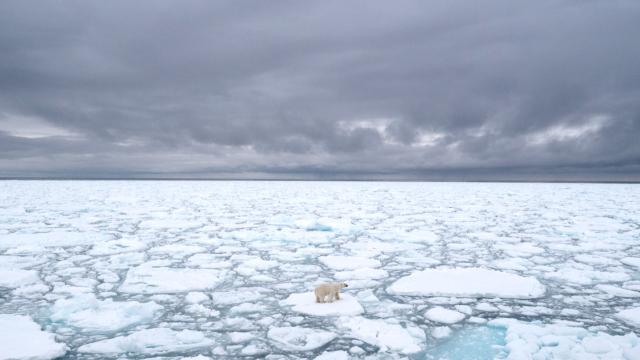Arctic sea ice shrank to its second lowest level on record, researchers announced on Monday. Sorry.
It’s typical for Arctic sea ice to melt in summer and freeze back up in winter. But thanks to a wild-arse, record-breaking heat waves in the Earth’s northernmost regions, this year’s minimum ice extent is anything but normal.
The National Snow and Ice Data Centre’s data shows that on September 15, Arctic sea ice likely reached its annual minimum extent of 3.74 million square kilometres, ranking behind only September 2012’s minimum, when the lowest level on record was measured at 3.41 million square kilometres. The minimum 2.51 million square kilometres below the 1981 to 2010 average, which NSIDC helpfully notes is roughly equal to Alaska, Texas, and Montana combined. The 10 lowest sea ice extents have occurred in the past 13 years.
Ice declined especially quickly between August 31 and September 5, as warm air from the recent heat wave in Siberia — which would have been nearly impossible without the climate crisis — rose into the region. That six-day period marked the fastest rate of ice loss on record, according to NSIDC.
This is the second-lowest seen since satellite observation began in 1979. But in all likelihood, this occurrence is even more notable than all that. But other research using record like mud deposits and other proxies for deep past climate show that the stark decline in sea ice is like nothing seen in thousands of years.
This scary news is the latest signal that the climate crisis is fundamentally changing the Arctic, which is the fastest-warming region of our planet. Research shows the area could be well on our way to completely ice-free summers as soon as 2035 unless we make some big, global changes.
“The Arctic is yelling at us to pay attention, with troubling signs from heat waves to massive sea ice loss,” Zach Labe, a postdoctoral researcher at Colorado State University, said in a statement emailed to Earther. “This year’s sea ice minimum is part of a highly disturbing downward trend — one that will continue until the summer sea ice is gone unless we slow global warming by systematically reducing our greenhouse gas emissions.”
Climate chaos is fuelling ice melt in the Arctic, and ice melt may subsequently wreak havoc on the climate system. Unlike the breakdown of land ice, melting sea ice doesn’t contribute to sea level rise. But ice coverage does help cool down the Arctic and the rest of Earth. Without it, more sunlight gets absorbed by the darker ocean waters. That triggers more ice loss and further planetary warming, which could influence weather patterns all over the world.
Losing sea ice has particularly devastating consequences for Arctic ecosystems. Indigenous communities in the region, for instance, depend on it during the winter and spring, when it acts as a physical bridge and helps them travel, gather, hunt, and dogsled. Local animals such as caribou, seals, and polar bears rely on the ice to find food and move about, too. To give them — and ourselves — a shot at survival, our only choice is to ramp down global greenhouse gas emissions as quickly as possible.
